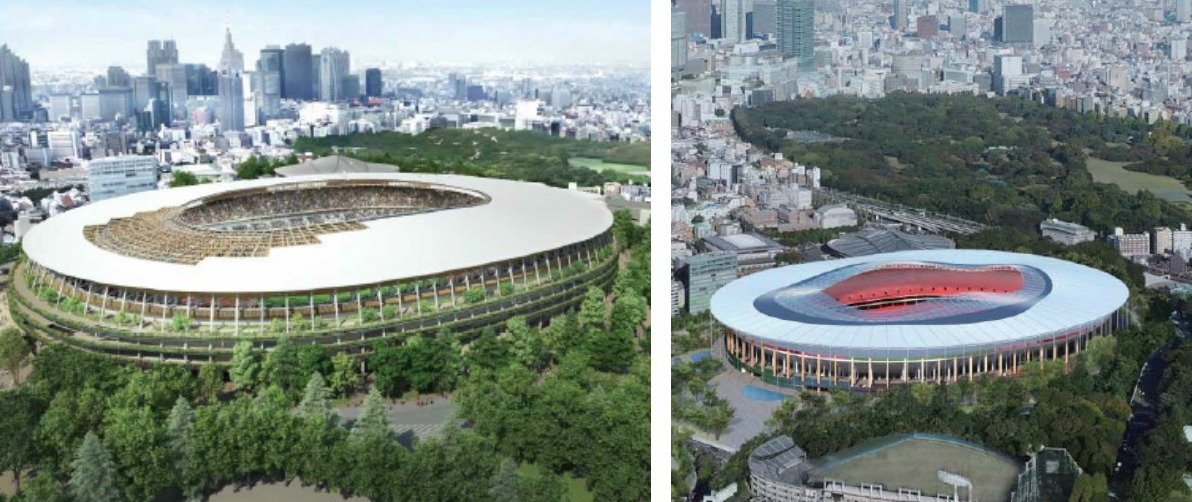
Proposal A (left) and Proposal B (right). Architect names have been redacted, but we think we have a pretty good guess.
Today the Japan Sports Council released plans submitted by two competing groups who are proposing designs for Tokyo’s 2020 Olympic Stadium. Although the names of those involved have been redacted – each proposal is simply referred to as Proposal A and Proposal B – it was reported by Nikkan Sports that architects Toyo Ito and Kengo Kuma were facing off.
If you assume that information is correct then it’s pretty easy to guess which proposal belongs to who based on aesthetics. We’re going to say Proposal A is Kengo Kuma and Proposal B is Toyo Ito. But either way, let’s go to the renderings to see what they’ll potentially look like.
At 48 and 50 pages, respectively, both proposals are very in-depth and cover everything from basic renderings to environmental considerations, timing and costs. And both proposals came in at just under 150 billion yen (about $1.2 billion USD), which is about half of what the original Zaha Hadid stadium was going to cost. So what is different about them?
Proposal A – a marriage of wood and forestry
Proposal A incorporates the surrounding trees of Jingu Shrine to create a stadium of wood and greenery. The roofing is a hybrid structure that uses wood and steel. The plan is for a stadium that is in tunet with the surrounding environment and utilizes the latest technology to create a modern interpretation Japan’s climate, culture and tradition, reads one of the statements.
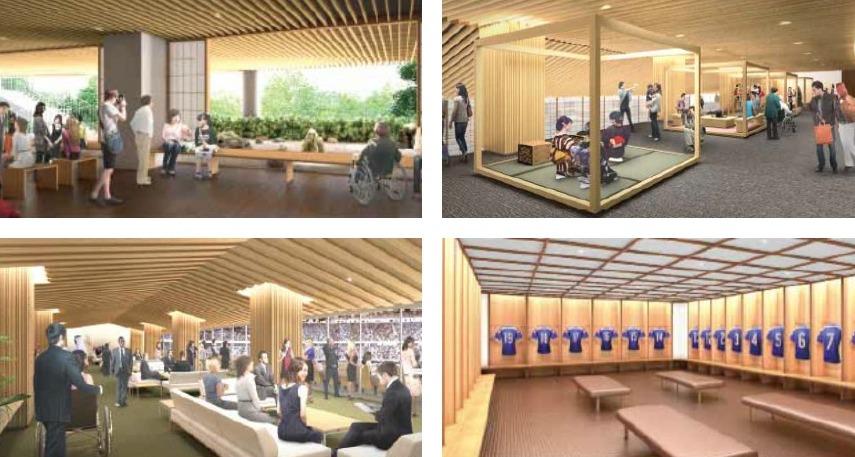
wooden latticework is an integral component of the interior spaces, and is also a telltale sign of the work of architect Kengo Kuma
The horizontal lines of the façade even reference the Gojunoto wooden pagoda at Horyuji Temple that was built in the early 700s. It’s a beautiful yet orthodox interpretation of Japanese design.
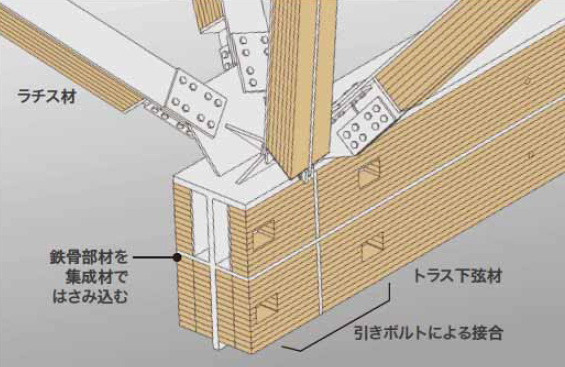
A close-up of the wood and steel hybrid mechanism that will support the roof. The architects plan to use locally-sourced wood to create the uniquely Japanese roofing.
Proposal B – an undulating roof that rests on solid wood
What defines Proposal B is it’s unique and feathery undulating roof, but also the solid wood pillars that will be equally spaced around the stadium. The 72 weight-bearing pillars will serve a symbolic purpose in that they reference Japan’s tradition of building pillars to honor festivities.
Even today Japan has several preserved archaeological sites that date back to the Jomon period (about 12,000 BC) in which large pillared buildings were found that are believed to have served as monuments or shrines.
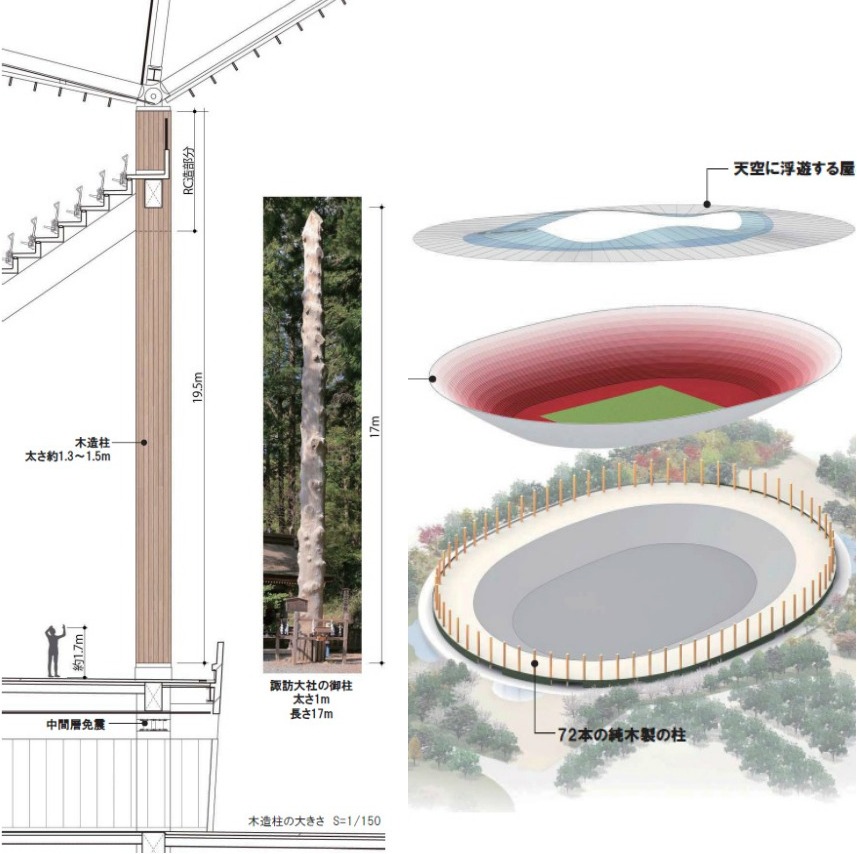
a closer look at the solid wood pillars and how all 72 of them will l be spaced evenly around the stadium
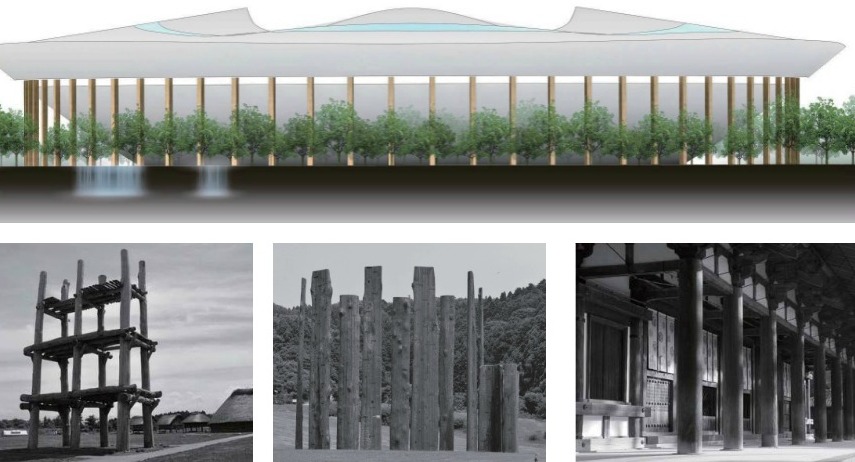
Referencing ancient Japan’s tradition of erecting pillars: from left to right, Sannai-Maruyama site, Mawaki site and Tōshōdai-ji is Buddhist temple
The 72 pillars aren’t an arbitrary number either. They represent Japan’s 72 microseasons. An 850 meter walkable circuit wraps around the stadium and visitors can traverse the distance as they walk around the pillars in take in all of what Japan’s seasons have to offer.
The redness of Japan’s rising sun glows through the roof as its historic tradition supports it.

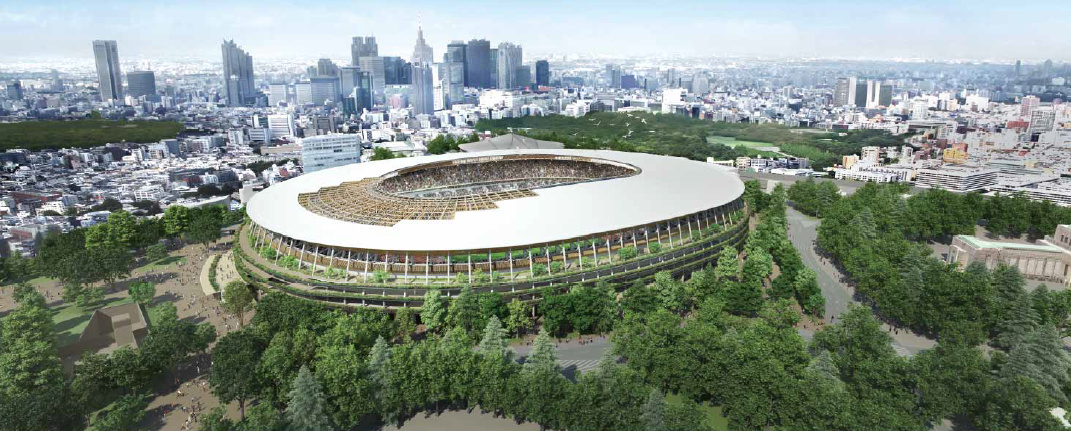
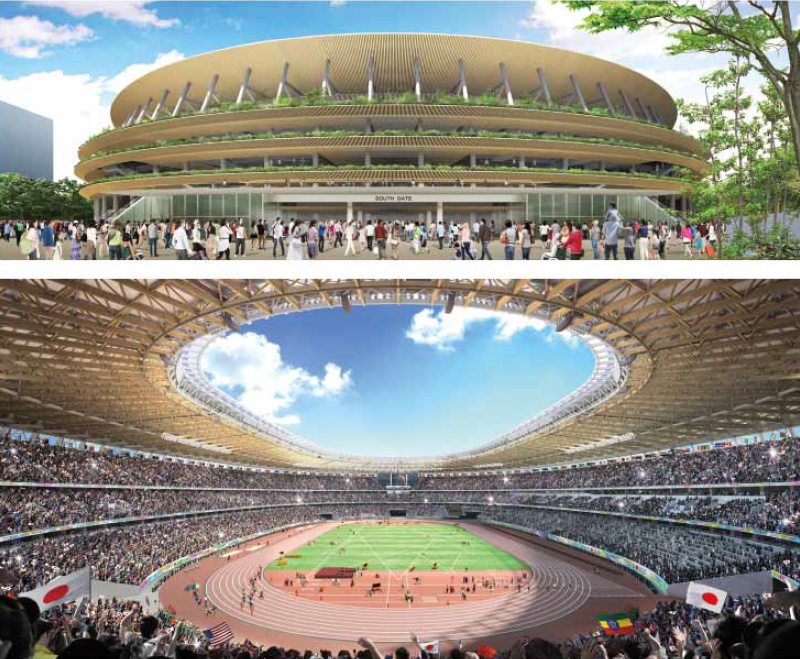


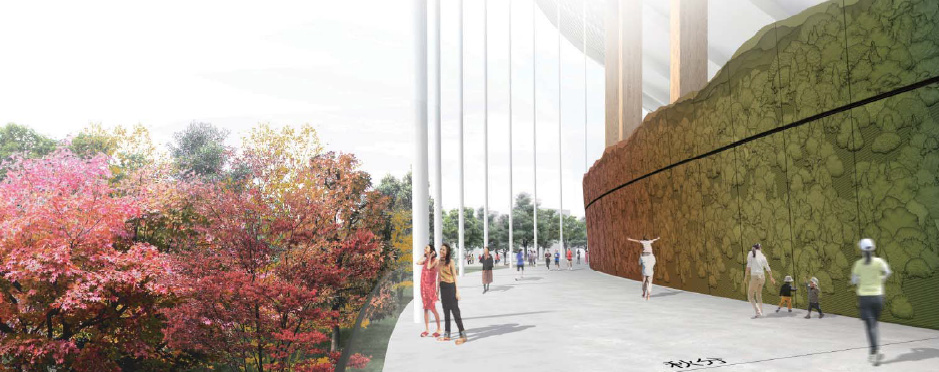
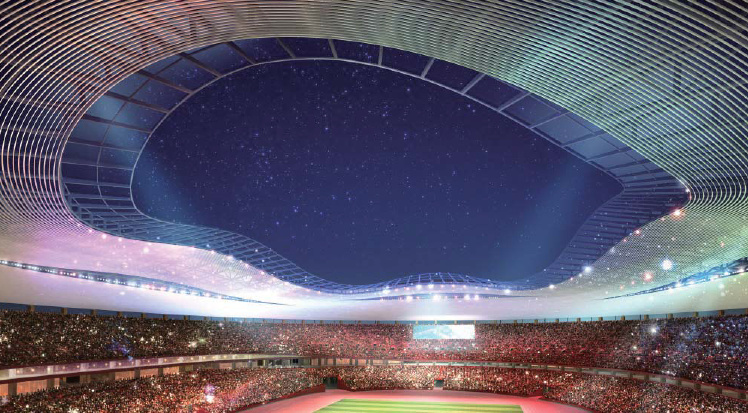

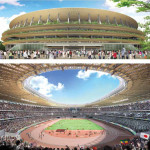
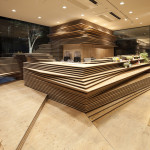
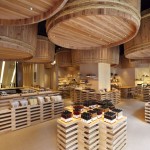
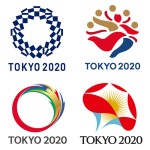


















December 15, 2015 at 5:17 pm
Now this is really something. I am happy to see images of what the stadium (kengo kuma) may look like from GROUND LEVEL. We saw many ictures of Hadid’s design taken from above, but that is the very least that matters to the people using the stadium. I liek the wood – idea very much and the fact that this design is more modest. It is just a stadium, after all. It references Japan’s culture. Japan is the host of these Olympic Games. As simple as this. Practical and Contemporary. Goo!